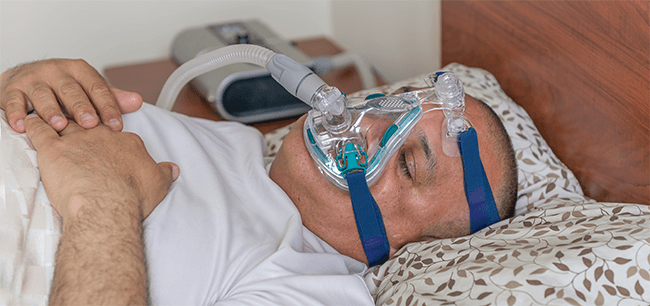Respiratory muscle training (RMT) was tested for its effect on OSA in three people with SCI.
Key Findings
- Respiratory muscle weakness in people with spinal cord injury (SCI) contributes to respiratory complications, increasing morbidity and mortality.
- Respiratory muscle weakness also contributes to highly prevalent obstructive sleep apnea (OSA) in people with SCI.
- Two block of 4 weeks of respiratory muscle training (RMT) improved respiratory muscle strength, hypopnea-apnea index and perception of sleep.
- RMT effectively improves respiratory muscle strength and OSA on people with SCI.
Study Methods
Polysomnography, Epworth Sleepiness Scale (EPSS), MIP, MEP and spirometry were assessed in patients with SCI before and after two blocks of four weeks of RMT with two weeks rest in between, and compared to sham training in the same patients. In the first block patients used an inspiratory muscle trainer, and in the second block they used an expiratory muscle trainer.
Study results
MEP and spirometry data improved in all subjects, MIP in 2 out of 3 patients and the apnea-hypopnea index and EPSS improved in the 2 patients that presented with OSA.
In conclusion, RMT is a feasible and effective method to improve respiratory muscle strength and to improve OSA in people with SCI.
References
Boswell-Ruys CL, et al. Respiratory muscle training may improve respiratory function and obstructive sleep apnoea in people with cervical spinal cord injury. Spinal Cord Series and Cases (2015): 15010.

0 Comments